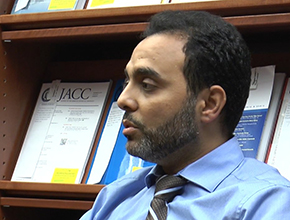References
Angus DC, Barnato AE, Bell D, et al. A systematic review and meta-analysis of early goal-directed therapy for septic shock: the ARISE, ProCESS and ProMISe Investigators. Intensive Care Med. 2015 Sep;41(9):1549-60. doi: 10.1007/s00134-015-3822-1. Epub 2015 May 8. PubMed PMID: 25952825.Mouncey PR, Osborn TM, Power GS, et al; ProMISe Trial Investigators. Trial of early, goal-directed resuscitation for septic shock. N Engl J Med. 2015 Apr 2;372(14):1301-11. doi: 10.1056/NEJMoa1500896. Epub 2015 Mar 17. PubMed PMID: 25776532.
ARISE Investigators; ANZICS Clinical Trials Group, Peake SL, Delaney A, Bailey M, et al. Goal-directed resuscitation for patients with early septic shock. N Engl J Med. 2014 Oct 16;371(16):1496-506. doi: 10.1056/NEJMoa1404380. Epub 2014 Oct 1. PubMed PMID: 25272316.
ProCESS Investigators, Yealy DM, Kellum JA, Huang DT, et al. A randomized trial of protocol-based care for early septic shock. N Engl J Med. 2014 May 1;370(18):1683-93. doi: 10.1056/NEJMoa1401602. Epub 2014 Mar 18. PubMed PMID: 24635773; PubMed Central PMCID: PMC4101700.
Rivers E, Nguyen B, Havstad S, et al; Early Goal-Directed Therapy Collaborative Group. Early goal-directed therapy in the treatment of severe sepsis and septic shock. N Engl J Med. 2001 Nov 8;345(19):1368-77. PubMed PMID: 11794169.
Roman Jaeschke: Good afternoon. I would like to introduce to you Dr. Waleed Alhazzani, an intensivist, methodologist, and gastroenterologist. Waleed, you were participating in the last edition of the Surviving Sepsis Campaign and I know that you are a lead methodologist for the coming edition of the Surviving Sepsis Campaign. But we cannot talk about the future at the moment. There were 2 areas of controversies during the last Surviving Sepsis Campaign. I wonder if you could share your views about them with us. The first one is recent papers about resuscitation in sepsis. Could you share your views on their influence with our listeners?
Waleed Alhazzani: Of course. Thank you Dr. Jaeschke for the invitation. This is indeed a very controversial area. It has raised a lot of interest in the ICU community and specifically within the Surviving Sepsis Campaign group. In this video, I just share my own views and my own interpretation of the literature.
The era of the early goal-directed therapy started with the publication of the Rivers trial in 2001. It was a landmark study, although small in size, but it showed the tremendous treatment effect, in which there was a reduction in hospital mortality by about 16% [absolute] and a relative risk reduction in hospital mortality by about 34% – a huge reduction in mortality. Since then, the standard of care has changed, and people were applying early goal-directed therapy. It was incorporated in the Surviving Sepsis bundles, and we know from longitudinal studies that application of Surviving Sepsis bundles when treating patients with sepsis has resulted in a significant reduction in mortality over time. So it does work, and it did actually help reduce mortality in this population.
Last year, in 2015, 3 large randomized trials were published, the ProCESS, ARISE, and ProMISe trials, all published in New England Journal of Medicine. They basically compared early goal-directed therapy with what they called usual care, and we will talk about that in the next few minutes. What they found was that usual care compared to early goal-directed therapy did not result in any statistically significant difference in terms of mortality and other patient-important outcomes. Subsequently, a meta-analysis was published in Intensive Care Medicine by Angus and his colleagues, meta-analyzing the results of these trials. This was a pairwise meta-analysis. We are still waiting for the individual patient data meta-analysis, but again the same conclusion: There was no difference in mortality between the 2 arms.
How do we interpret this literature? My own interpretation: The only difference between the 2 arms of intervention, what we call usual care and early goal-directed therapy, is probably related to less utilization of central venous gas saturation to guide the therapy and probably less transfusion threshold as well, at least early, within these trials. But everything else was a more or less similar concept. They all used early antibiotics, early recognition of sepsis, physicians who are experienced with treating sepsis and septic patients, who are at the bedside with frequent assessment of the patient condition, fluid therapy, early as well to establish perfusion, and frequent volume status assessment. So basically the same concept applied, but in different ways. The other advantage of applying or not following the Rivers trial [protocol] in these studies is less utilization of oximetry catheters or central lines – this could be an advantage. However, it will be hard to say that we should not be using early goal-directed therapy because, simply, there are no interventions that are proven to be superior to this protocol, we know it works and has resulted in the reduction in mortality.
So, my own interpretation and my own suggestion is: People who are experienced with treating sepsis, who are aware of the literature, can still manage septic patients without strictly following the early goal-directed therapy, using the concept we have just discussed. However, if another physician chose to use early goal-directed therapy, I still think this is acceptable, as we mentioned all the advantages of using it before, knowing that it will require people to insert probably more invasive access, like oximetry catheters or even central lines to monitor central venous saturation. The other thing I would add to this as well is that we recently did a meta-analysis looking at lactate clearance and the utility in treating those patients. We found that [among] studies that compared lactate clearance, there were 4 randomized trials. Compared to early goal-directed therapy, there was actually reduction in mortality [with moderate quality of evidence]. We probably should be monitoring lactate as well, adding this to the management of those patients.
RJ: So if I understand correctly, early goal-directed therapy meaning moving fast, being at the bedside, reviewing the situations frequently, having experienced people, and looking at the lactate level. Still early goal-directed therapy.
WA: I agree, yes.
 English
English
 Español
Español
 українська
українська





